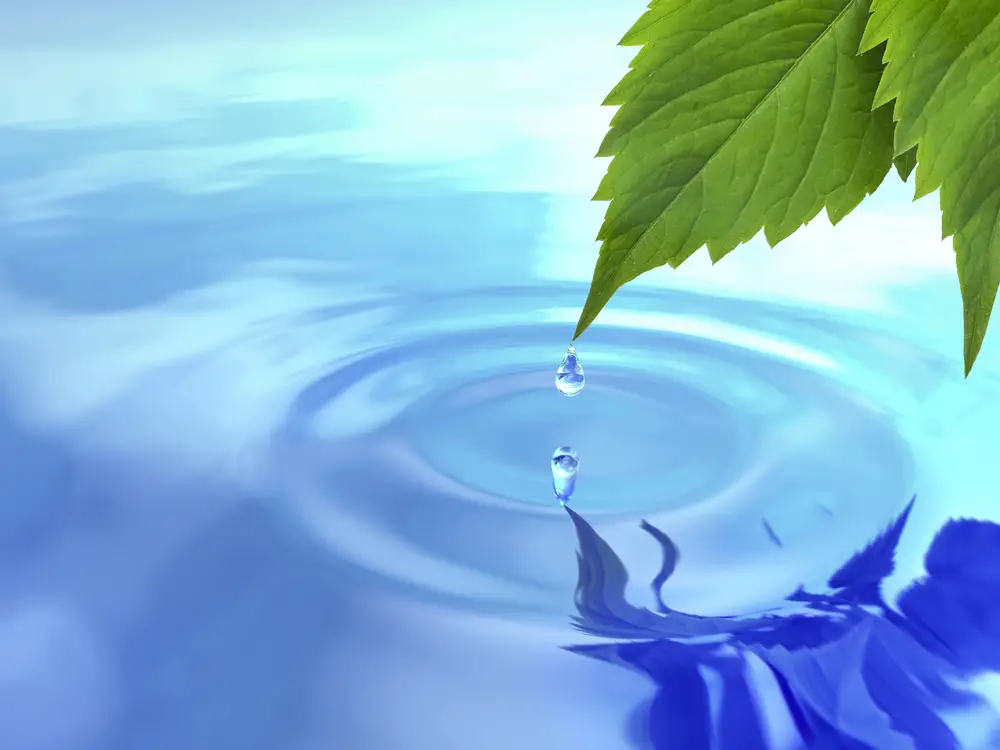As a BetterHelp affiliate, we receive compensation from BetterHelp if you purchase products or services through the links provided
Water tanks are essential household installations for preservation, especially in regions prone to droughts or inadequate water supply. Selecting a compatible tank involves considerable understanding and informed choices. This write-up details various kinds of home tanks and factors affecting their efficacy in assisting you on this journey.
The Need for Tanks
In an age where sustainability is paramount, installing a water tank at your home can reduce reliance on municipal supply, conserve water, and reduce your overall environmental footprint. Water is also essential for health, and hydration is linked to stress. So, water tanks can help save money and reduce stress.
They provide an efficient solution to overcome unpredictable climatic changes and unexpected water restrictions. Tanks can store runoff from rainwater that would otherwise go to waste.
Furthermore, they provide excellent backup during periods of drought or water scarcity. Not forgetting the independence they provide—with stored rainwater or groundwater, you no longer have to rely solely on the public water supply. This makes them an investment in both environmental preservation and self-sustainability.
Moreover, if appropriately filtered, the water stored in tanks can be used for myriad purposes, such as gardening, toilet flushing, washing cars, or even drinking. Thus, investing in a tank ensures a multifold return on investment while contributing to a sustainable future.
Complete Range Overview
Selecting a suitable tank requires understanding the options available from the complete range. Although numerous styles and materials are present in the market, some prominent ones include Polyethylene Tanks (also known as plastic tanks), steel tanks, and fiberglass tanks.
Owing to their dark color, Polyethylene Tanks boost durability, UV resistance, and less susceptibility to algae growth. Steel tanks demonstrate strength alongside flexibility since they are customizable in size and shape. Meanwhile, Fiberglass tanks guard against erosion or rust, extending the tank’s life.
Additionally, homeowners may choose between round and slimline tanks depending on the available space and preferences. Round tanks generally have more capacity, while slimline tanks are space savers. The tank you opt for should accurately reflect your geographic location, water usage pattern, and personal aesthetics.
Polyethylene Tanks Explained
Polyethylene Tanks or plastic tanks are among the most popular choices for homes due to their numerous benefits. Famed for their durability, they skillfully withstand fluctuating temperatures and harsh climatic conditions.
A quality polyethylene tank will adequately shield against UV radiation, preventing degradation from constant sun exposure. Due to this formidable protection, these tanks have a decades-long lifespan.
A not-to-miss attribute of polyethylene tanks is their cost-effectiveness. They are significantly cheaper than their steel or fiberglass counterparts without compromising functionality or longevity. Additionally, being lightweight, they prove hassle-free during installation and handling.
Rainwater Harvesting Benefits
From an environmental viewpoint, rainwater harvesting is invaluable. It eases the demand placed on reservoirs and aquifers by reducing consumption of municipally treated water where it is not necessary—like garden irrigation or toilet flushing.
Rainwater harvesting can significantly save water bills in the long run, particularly in areas with high water tariffs. It also provides an excellent off-the-grid solution during periods of droughts or severe water restrictions — all you need is substantial rainfall, adequate catchment facilities and storage – which a home tank serves.
Rainwater is also naturally soft, which makes it less harsh on domestic appliances that use water, thus extending their lifespan. It is free from many chemical additives found in public supply, rendering it beneficial for plants and soil.
Maintaining Tank Health
A tank’s effectiveness and longevity depend substantially on its maintenance. Negligence can lead to algae growth, sediment accumulation, bad smells, or even damage to the tank structure. Regular cleaning (ideally once a year) prevents sediment build-up, maintains water quality, and ensures smooth outflow.
The tank also needs to be checked regularly for cracks or blisters & repaired promptly if any are found. If your talk lacks an in-built filter system, consider adding external ones to prevent debris or insect entry.
Maintaining an opaque exterior is equally essential—exposure to sunlight encourages algae growth. Investing a little care can secure your tank’s health, enhance its longevity, and ensure a clean water supply for years.
Navigating Council Regulations
Before installing a water tank at home, familiarize yourself with the local council regulations. Failure to comply may result in fines or being asked to move or remove your tank after installation, which can be expensive and time-consuming.
The regulations revolve around size restrictions, positioning rules, installation quality standards, and rainwater usage guidelines. These can vary greatly from location to location, with some councils offering rebates on rainwater tanks or specific types of tanks, which further adds to your savings.
So always conduct due diligence with your local council or water authority before purchasing. Distributors such as The Water Tank Factory might also help you understand these regulations.
Similarly, not all tanks have a warranty that is valid everywhere, so make sure that your tank’s warranty is valid in your territory and covers servicing or replacement parts if needed.
Maximizing Water Usage Efficiency
Apart from installing a tank, you must maximize water usage efficiency. This involves considering how the water is supplied inside the tank to filter out debris, leaves, and bugs.
Installing gutter meshing or a first flush diverter can help filter out leaves or debris. Regularly cleaning these filters improves the water quality and prevents blockages inside the tank caused by accumulated waste over time.
It must be adequately treated if you use collected rainwater for potable purposes—vortex filters to remove contaminants before storing or UV sterilization systems before consumption help.
Tall tanks have greater pressure at their outlets than short ones. So, if gravity feed is an option in your scheme of things, this could reduce reliance on electric pumps.
Round vs Slimline Tanks
The choice between round and slimline tanks depends largely upon aesthetic preferences and space constraints. Round tanks have been a traditional favorite because they offer more capacity at a lower cost due to their strength, which comes inherently from their shape.
Slimline tanks, on the other hand, won homes by virtue of their design, which allows them to fit into narrow spaces without any fuss. They translate into perfect solutions in urban residential areas, where their availability in various sizes and designs gives them an edge.
Though round tanks hold a slight advantage over slim lines in terms of cost-per-liter storage, the decision ultimately comes down to individual prerequisites.
Acknowledging Long-term Benefits
Apart from the immediate benefits, installing a water tank also imparts long-term benefits. It makes your home more sustainable, becoming progressively attractive in the real estate market.
Over time, reduced dependence on mains-supply water decreases the load on community infrastructure and saves you considerable sums on water bills. Additionally, by using harvested rainwater for external use, you safeguard the soil microbiological life, and tending to your greenery makes you free from worries about water restrictions or price hikes. And generally, you can live a more peaceful life.
Embracing Tranquility: The Psychological Benefits of Water Self-Sufficiency
 In conclusion, while the practical benefits of installing a home water tank are vast, ranging from environmental conservation to financial savings, the psychological advantages are equally compelling. The act of collecting and utilizing rainwater not only ties us closer to nature’s cycles but also instills a deep sense of self-reliance and peace.
In conclusion, while the practical benefits of installing a home water tank are vast, ranging from environmental conservation to financial savings, the psychological advantages are equally compelling. The act of collecting and utilizing rainwater not only ties us closer to nature’s cycles but also instills a deep sense of self-reliance and peace.
- Reduced Anxiety: Knowing you have a dependable water source alleviates stress and anxiety associated with water scarcity and restrictions. This security can lead to a more relaxed and content state of mind.
- Mindful Living: Engaging with the water cycle promotes mindfulness. Harvesting, storing, and using rainwater encourages a connection with the environment, fostering a sense of gratitude and presence.
- Sense of Accomplishment: The initiative of setting up and maintaining a water tank can offer a profound sense of achievement. This self-sufficiency not only empowers but also boosts self-esteem and well-being.
- A Step Towards Sustainability: Embracing water conservation through home tanks is a step towards sustainable living. Knowing you are contributing to the planet’s well-being can provide a significant mental health boost, offering a purposeful and fulfilling perspective on daily living.
Installing a home water tank transcends mere practicality. It weaves the threads of sustainability with mental and emotional well-being, becoming a practice of environmental stewardship, personal resilience, and psychological peace. By making informed choices about our water use, we nurture the earth and cultivate an inner sanctuary, reinforcing our mental health in these challenging times.
As we continue to navigate the complexities of modern living, let the water we collect, store, and utilize remind us of our capacity for adaptation, our responsibility towards nature, and the serene strength of self-sufficiency.
- Stress Management: What is the Relationship Between Stress and Addiction? - June 28, 2024
- Exploring Techniques to Maintain a Healthy Lifestyle without Drugs - May 28, 2024
- How Acupuncture Helps Treat Chronic Fatigue Syndrome - May 28, 2024
This site contains affiliate links to products. We will receive a commission for purchases made through these links.




